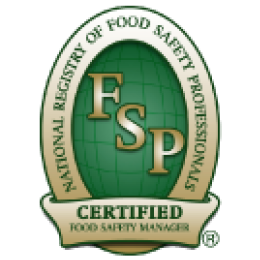Vertical farming is an innovative agricultural technique that involves growing crops in vertically stacked layers, often in urban areas. Utilizing indoor spaces such as warehouses or high-rise buildings allows for efficient use of land and maximizes crop production. With the global population projected to reach 9.8 billion by 2050, vertical farming is seen as a potential solution to meet the growing demand for food. This method is essential in addressing food security challenges in urban areas by bringing food production closer to consumers, reducing reliance on distant rural farms, and minimizing transportation costs. Additionally, vertical farming conserves water and reduces the need for pesticides, contributing to the overall sustainability of the agricultural system.
Why Vertical Farming is the Future of Urban Agriculture
Utilization of Limited Space in Urban Areas
The future of urban agriculture rests on the success of vertical farming. With limited space available in urban areas, traditional farming methods are no longer feasible. Vertical farming offers a solution by utilizing both horizontal and vertical space, making the most efficient use of the limited area. This innovation transforms underutilized urban spaces into productive agricultural hubs, ensuring food production even in densely populated cities.
Year-Round Crop Production
Vertical farming allows for year-round crop production, overcoming the limitations of seasonal changes. By cultivating crops indoors, farmers can control the climate, ensuring optimal conditions for growth. LED lights provide the necessary light spectrum, allowing plants to photosynthesize and thrive regardless of natural daylight availability. This capability ensures a continuous supply of fresh produce, enhancing food security and stability in urban areas.
Reduction of Environmental Impact
A significant advantage of vertical farming is its reduced environmental impact. By eliminating the need for extensive land use, natural habitats can be preserved. Additionally, growing produce locally reduces the carbon emissions associated with long-distance transportation. Vertical farming also minimizes water usage with innovative irrigation systems, contributing to sustainability. This environmentally friendly approach supports efforts to combat climate change and promotes the conservation of vital natural resources.
Increased Efficiency and Yield
Vertical farming systems are designed for increased efficiency and yield. Advanced technologies enable precise control of environmental factors, such as temperature, humidity, and nutrient levels. This optimization allows plants to reach their full growth potential, maximizing crop yield. Automation and robotics further enhance efficiency, streamlining processes and ensuring consistent production. As a result, vertical farming can produce more food per square meter than traditional farming methods, making it an ideal solution for urban agriculture.
Advantages of Vertical Farming
Minimizing Water Usage Through Recirculating Systems
One of the key advantages of vertical farming is its ability to minimize water usage through the implementation of recirculating systems. Unlike traditional agricultural practices, which require vast amounts of water for irrigation, vertical farms use advanced techniques to recycle and reuse water efficiently. By utilizing hydroponic or aeroponic systems, plants are provided with the exact amount of water they need, reducing wastage. Excess water is collected, filtered, and recirculated, significantly reducing overall water consumption. This sustainable approach conserves this precious resource and alleviates the strain on freshwater reserves.
Elimination of Pesticides and Herbicides
Vertical farming eliminates the need for harmful pesticides and herbicides, offering a healthier and safer way to cultivate crops. In a controlled indoor environment, pests and diseases can be effectively managed without resorting to chemical interventions. Through the implementation of integrated pest management strategies, such as biological controls and beneficial insects, natural predators can be introduced to combat pests. This approach reduces the reliance on synthetic chemicals, ensuring that the produce grown in vertical farms is free from harmful residues and toxins.
Efficient Energy Usage with LED Lights
Vertical farms make use of efficient energy technologies, particularly LED lights, to provide the necessary light spectrum for plant growth. LED lights consume significantly less energy compared to traditional lighting systems, such as fluorescent or incandescent bulbs. They can be tailored to emit specific wavelengths of light, optimizing photosynthesis and plant growth. LED lights also produce less heat, reducing the need for additional cooling systems. This energy-efficient approach enables vertical farms to operate year-round, regardless of external climate conditions, while minimizing energy consumption and greenhouse gas emissions.
Mitigation of Transportation and Contamination Risks
Vertical farming offers the advantage of local food production, mitigating the risks associated with long-distance transportation. With vertical farms located within or near urban areas, produce can be harvested and delivered to consumers within a short time span, ensuring maximum freshness and nutritional value. This proximity not only reduces transportation costs but also decreases the carbon footprint associated with food distribution. Additionally, vertical farms’ controlled environments minimize contamination risks throughout the production process, ensuring a safer and more hygienic food supply.
Conclusion
In essence, vertical farming presents numerous advantages that are crucial for the future of urban agriculture. By minimizing water usage, eliminating pesticides, optimizing energy usage, and mitigating transportation and contamination risks, this innovative farming methodology demonstrates its potential as a sustainable solution for feeding our growing urban populations. As the world continues to face challenges related to food security and environmental sustainability, vertical farming presents a viable and innovative approach to address these issues. Its efficient use of space, reduced environmental impact, and potential for year-round production make it an ideal solution for sustainable urban farming, ensuring a resilient and sustainable food system for future generations.





